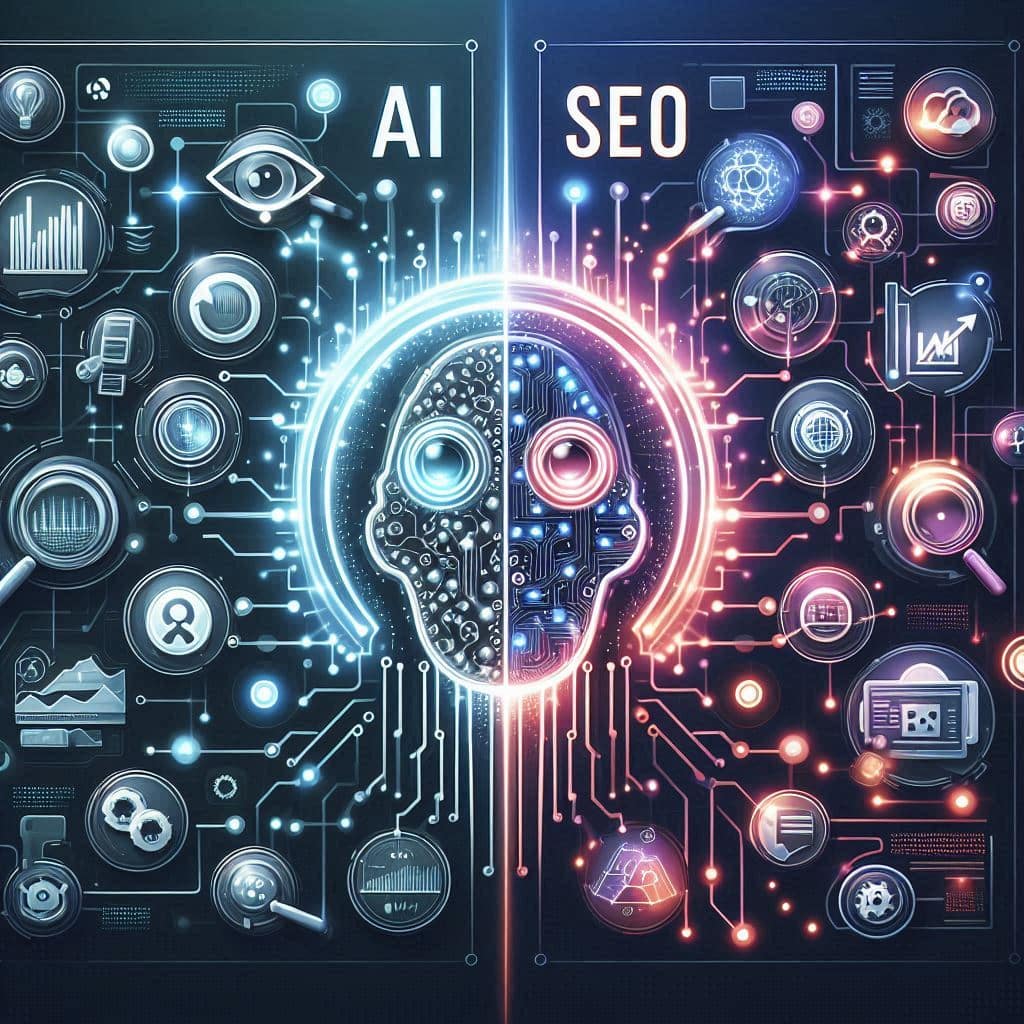What is SEO?
SEO (Search Engine Optimization) is the process of optimizing your website and content to improve visibility on search engines like Google, Bing, and Yahoo to earn higher organic (non-paid) traffic.
What is SEO and Why It Matters
SEO is not just about keywords or backlinks—it’s about understanding user intent and delivering the best possible experience for both users and search engines. In 2025, with AI-driven algorithms and voice search on the rise, SEO has become more dynamic and competitive than ever.
Whether you’re a startup or an enterprise, SEO plays a critical role in driving targeted, long-lasting, and cost-effective online visibility.
📊 Stat: Over 68% of online experiences begin with a search engine. [BrightEdge]
How SEO Works in 2025
Search engines use crawlers to scan web pages and index them in databases. When a user searches, the engine retrieves the most relevant results based on hundreds of ranking factors.
Key trends in 2025 include:
- User behavior patterns (CTR, dwell time)
- Natural Language Processing (NLP)
- Topical authority and semantic relevance
- Real-time content freshness
- Page experience and Core Web Vitals
3 Main Types of SEO
1. Technical SEO
Ensures your site is crawlable, fast, secure, and mobile-friendly.
- XML sitemaps
- Robots.txt
- Core Web Vitals
- HTTPS & security headers
- Structured data/schema markup
2. On-Page SEO
Focuses on optimizing content and HTML elements on your website.
- Title tags & meta descriptions
- Header tags (H1-H6)
- Keyword placement
- Internal linking
- Image alt attributes
3. Off-Page SEO
Builds your site’s trust and authority through external links and signals.
- High-quality backlinks
- Brand mentions
- Social signals
- Guest blogging
Top SEO Ranking Factors
| Ranking Factor | Importance |
|---|---|
| Page Experience/Core Web Vitals | ⭐⭐⭐⭐⭐ |
| Quality of Content | ⭐⭐⭐⭐⭐ |
| Backlink Profile | ⭐⭐⭐⭐ |
| Mobile Usability | ⭐⭐⭐⭐ |
| Semantic Keyword Relevance | ⭐⭐⭐⭐ |
| Internal Linking Structure | ⭐⭐⭐ |
| Freshness of Content | ⭐⭐⭐ |
| HTTPS and Secure Site | ⭐⭐⭐ |
Best SEO Tools in 2025
| Tool | Best For |
|---|---|
| Ahrefs | Backlink analysis & keyword gaps |
| SEMrush | Full-stack SEO audits & competitors |
| Google Search Console | Performance monitoring |
| Surfer SEO | Content scoring & optimization |
| Screaming Frog | Technical SEO audits |
| ChatGPT + Browser | SERP research & content planning |
| NeuronWriter | Semantic writing & topical depth |
SEO Best Practices
- Create content for humans first
- Use structured data
- Build internal links naturally
- Target topic clusters, not isolated keywords
- Refresh content regularly
- Compress and optimize images
- Write compelling title tags
- Use short, descriptive URLs
- Use schema markup (FAQ, Article)
- Enhance speed and mobile UX
SEO vs SEM: What’s the Difference?
SEO (Search Engine Optimization) focuses on earning traffic organically, while SEM (Search Engine Marketing) includes paid search tactics like Google Ads. Both aim to increase visibility, but SEO delivers sustainable, long-term traffic with higher ROI.
Voice Search and AI in SEO
With devices like Alexa, Siri, and Google Assistant, voice search has exploded. SEO in 2025 must consider natural language queries, question-based keywords, and conversational tone to match voice search behavior.
- Use long-tail, spoken phrases
- Optimize for featured snippets
- Implement FAQ schema
Local SEO vs Global SEO
Local SEO targets specific regions or cities, while Global SEO aims for broad, multilingual audiences. Strategies differ:
| Aspect | Local SEO | Global SEO |
|---|---|---|
| Target | Local maps & directories | Multilingual SERPs |
| Tools | Google Business Profile | Hreflang, Global CDN |
| Content | City-specific pages | Internationalized copy |
Video SEO & YouTube Optimization
YouTube is the world’s second-largest search engine. Optimizing videos increases reach and organic traffic.
- Use keyword-rich titles and descriptions
- Upload transcripts and subtitles
- Engage users through thumbnails and CTAs
- Embed videos on high-traffic blog pages
How Google’s Algorithm Has Evolved (2000–2025)
Understanding Google’s updates helps future-proof your SEO strategy:
- 2003 Florida Update: Penalized keyword stuffing
- 2011 Panda: Targeted thin content
- 2012 Penguin: Cracked down on link spam
- 2015 RankBrain: Introduced AI to search
- 2021 Core Web Vitals: UX becomes a ranking factor
- 2023 Helpful Content System: Focus on human-first content
- 2025+: Real-time AI scoring, behavioral signals, topical authority
Common SEO Mistakes to Avoid
- Keyword stuffing and over-optimization
- Ignoring mobile responsiveness
- Duplicate or thin content
- No internal linking strategy
- Not using schema or structured data
- Slow website loading speed
- Focusing only on traffic, not conversions
The Future of SEO: 2025 and Beyond
SEO will become increasingly integrated with AI, automation, and human behavior signals. Key trends include:
- AI-powered content optimization
- Greater personalization in SERPs
- Zero-click results and featured snippets
- Search powered by images, voice, and video
- Continuous algorithm updates and real-time indexing
Glossary of Common SEO Terms
- Backlink: A link from one website to another; important for off-page SEO.
- CTR: Click-through rate – the percentage of users who click on a search result.
- Keyword: A word or phrase used in search queries that SEO content targets.
- Schema Markup: Structured data code that helps search engines better understand your content.
- Meta Title: The page title that appears in search engine results.
Ultimate SEO Checklist for 2025 ✅
🔧 Technical SEO
- Mobile-friendly design
- HTTPS enabled
- Page speed < 2.5s
- Structured data added
- Crawlable sitemap and robots.txt
📝 On-Page SEO
- Primary keyword in H1 and URL
- Meta title & description optimized
- Short paragraphs and clear headers
- Internal links to related content
- Alt text for images
🌐 Off-Page SEO
- Earned backlinks from authority domains
- PR mentions or citations
- Social media promotion
🧠 Content Strategy
- Comprehensive topic clusters
- Includes FAQ schema
- Quarterly content updates
- Written or reviewed by experts
White Hat vs Black Hat SEO
White Hat SEO uses ethical strategies aligned with search engine guidelines, while Black Hat SEO involves manipulative techniques that can result in penalties or deindexing.
- White Hat: Quality content, schema markup, fast loading
- Black Hat: Cloaking, keyword stuffing, link schemes
SEO for E-commerce Websites
E-commerce SEO focuses on optimizing product pages, categories, and technical structure to increase organic sales.
- Optimize product titles and meta descriptions
- Use schema for reviews, prices, and availability
- Compress images and improve load time
- Eliminate duplicate content across similar SKUs
Content SEO vs Technical SEO
Content SEO focuses on what you say (quality, relevance, keyword usage), while Technical SEO is how your site functions (speed, structure, indexability).
Both are essential — great content cannot rank without technical health, and a perfect site won’t convert without content that satisfies intent.
International & Multilingual SEO Strategies
If you target audiences in multiple countries, implement hreflang tags to signal language and regional targeting to search engines.
- Use subdomains (e.g. fr.example.com) or subdirectories (e.g. /fr/)
- Translate content with cultural localization
- Avoid duplicate content across regions
- Set proper geo-targeting in Google Search Console
SEO Metrics That Matter
Measuring SEO success involves more than rankings. Key performance indicators (KPIs) include:
- Organic Traffic – Volume of search engine visitors
- Keyword Rankings – Visibility improvements
- CTR (Click-Through Rate) – Snippet engagement
- Dwell Time / Bounce Rate – User satisfaction
- Backlink Growth – Authority building
- Conversion Rate – Leads or sales from SEO
How to Perform an SEO Audit
SEO audits reveal technical issues and content opportunities. Here’s a simplified framework:
- Crawl your website (e.g., Screaming Frog)
- Check indexing and canonical issues
- Review page speed and mobile usability
- Analyze on-page elements (titles, headings, content)
- Inspect backlinks and anchor text
- Fix broken links and redirects
AI and Automation in SEO
AI tools like ChatGPT, Surfer SEO, and Clearscope assist in keyword research, content creation, and optimization. In 2025, automation powers:
- Automated SEO audits and reporting
- Predictive keyword clustering
- Dynamic content personalization
- Real-time competitor analysis
Link Building Strategies That Work in 2025
- Publish linkable assets (e.g. original data, infographics)
- Build relationships through guest blogging
- Use HARO and digital PR for press links
- Leverage content syndication and podcast features
- Avoid shady PBNs or paid links — they risk penalties
FAQs About SEO
How does SEO work in 2025?
SEO aligns your website’s structure and content with algorithmic ranking factors. Today, search engines prioritize user experience, value-driven content, and trust signals.
Is SEO still relevant?
Yes—organic search drives over 50% of traffic globally, making SEO vital for sustainable growth.
What are the top SEO tools today?
Ahrefs, SEMrush, Google Search Console, Surfer SEO, and NeuronWriter are essential in 2025.
How to rank #1 on Google with SEO?
- Create expert, value-driven content
- Optimize technical performance
- Earn backlinks from reputable sites
- Serve mobile and voice-first users





